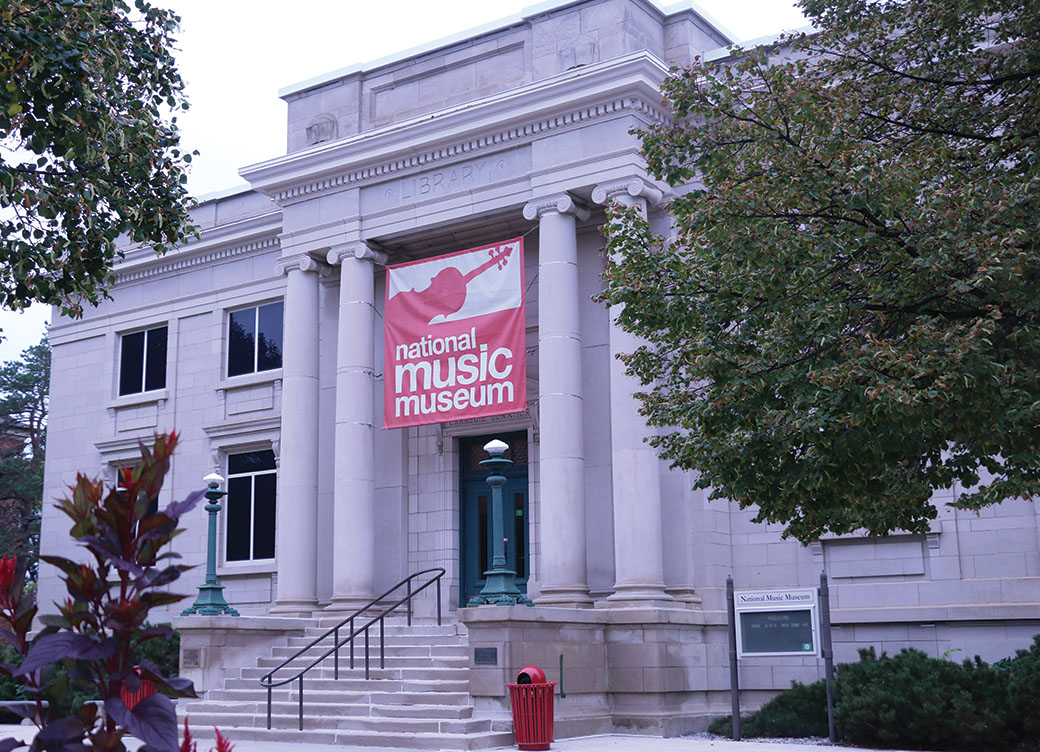
The National Music Museum: USD’s musical instrument headquarters
USD’s former library became the National Music Museum in 1973, and since then has been a pilgrimage for music lovers and enthusiasts all over the world.
The museum began as a collection of musical instruments and gradually blossomed into a world-renowned collection.
Patricia Bornhofen, the manager of communications for the NMM, said the museum had humble beginnings.
“It started off with a man (Arne Larson) who was an obsessive collector,” Bornhofen said. “In a way he was a hoarder of things, specifically musical instruments that interested him. Being a band director, he originally started his collection for educational purposes. Eventually, people started adding to the collection for him.”
As Larson’s collection became better known, people donated more and more to it, and eventually snowballed into a museum dedicated solely to music. Eventually, Larson’s son, André, became the director for the new museum. Under André Larson’s leadership, the museum acquired increasingly significant pieces.
The collecting of instruments never stopped at the National Music Museum — it just developed a focus on better and better instruments.
Today, the museum has a total of 15,000 instruments in the collection, though only 1,200 are on display at any one time.
In the museum, there are exhibits that shine a spotlight on different styles, eras, cultures, nationalities and specific instruments — including a large exhibit of a violin-maker’s shop and whole rooms dedicated to string instruments, foreign instruments and pianos and harpsichords.
Bornhofen said she is proud of the quality and variety of the collection the museum has amassed over the years.
“It’s important to try to get a cross-section of instruments to represent different cultures, nationalities, eras, makers and technologies,” Bornhofen said. “I think that having some of the best examples is something that the museum has done very well.”
One unique aspect of the museum is that it doesn’t entirely focus on who plays the instruments, but rather on the people who make the instruments, Bornhofen said.
Along with its year-round exhibits, the museum displays special galleries throughout the year, such as its Shakespearean and war-themed exhibits, which feature musical instruments that are relevant to those time periods and events.
Bornhofen said the NMM wasn’t as popular as it is today when she first accepted the position in 2013.
“When I came here to visit and saw the museum, I was so impressed with the museum that I realized I would love to do PR for this place. Part of it for me was that the museum just wasn’t known enough,” Bornhofen said. “In the music world everyone knows about the museum, it’s kind of a pilgrimage site for people, but for non-music people, they could be two steps away and don’t know who are.”
The museum itself isn’t only focused on music, either — Bornhofen said the museum is a collection of music, art and history on the local, national and international level.
“The brilliant thing about our collection in general is that it’s not just the famous stuff — it really shows you instruments through time,” Bornhofen said. “It shows you what the common people played, what worked, and what didn’t work throughout time.”
Correction at 11:11 a.m. on 9/8/16: Patricia Bornhofen is the manager of communications for the National Music Museum and the NMM’s Antonio Stradivari is known as the “Harrison.” A previous version of this article said Patricia Bornhofen is the director of the National Music Museum and misidentified the “Harrison” as the “Lady Blunt.”

